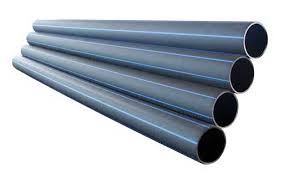Jul . 28, 2024 23:31 Back to list
Reliable Manufacturer of Corrugated HDPE Pipe Fittings for Durable and Efficient Water Management Systems
Exploring Corrugated HDPE Pipe Fittings A Comprehensive Overview
As the world moves towards more sustainable infrastructure solutions, the demand for high-quality pipe materials is increasing. One such material that has gained significant popularity is Corrugated High-Density Polyethylene (HDPE). Known for its durability and versatility, HDPE has become a preferred choice for various applications in the construction and water management industries. A crucial component of any piping system is its fittings, and the manufacturers of corrugated HDPE pipe fittings play a vital role in ensuring the integrity and efficiency of these systems.
What are Corrugated HDPE Pipes?
Corrugated HDPE pipes are characterized by their ridged surfaces, which provide enhanced strength while maintaining flexibility. This unique design allows them to withstand high pressure and various environmental conditions, making them ideal for underground applications, drainage systems, and stormwater management. Due to their lightweight nature, installation is easier compared to traditional materials like concrete or steel, ultimately reducing labor costs.
The Importance of Pipe Fittings
Fittings are essential for any piping system as they connect different sections of pipe and allow for turns, transitions, and changes in direction. They serve to maintain the hydraulic efficiency of the system, minimize leaks, and reduce the risk of system failure. With corrugated HDPE pipes, specialized fittings are required to ensure a seamless integration. This is where manufacturers who specialize in corrugated HDPE pipe fittings come into play.
Manufacturers of Corrugated HDPE Pipe Fittings
Quality manufacturers understand the specific requirements of the industry and strive to produce fittings that complement the benefits of HDPE pipes. The process begins with selecting high-grade polyethylene resin that meets the necessary regulatory standards. Advanced manufacturing techniques, such as extrusion molding, are utilized to create fittings that not only fit perfectly with the pipes but also possess the strength and durability necessary for long-term performance.
corrugated hdpe pipe fittings manufacturer

These manufacturers typically offer a wide range of fittings, including couplings, elbows, tees, reducers, and end caps. The variety allows for a multitude of configurations, catering to different installation needs. Moreover, many manufacturers are now focusing on creating environmentally friendly products, aligning with the global push for sustainability.
Benefits of Corrugated HDPE Pipe Fittings
1. Durability HDPE fittings are resistant to corrosion, chemical leaching, and UV degradation, ensuring a longer lifespan compared to traditional materials.
2. Flexibility The flexibility of HDPE allows for easier installation in challenging situations, reducing the need for expensive equipment or extensive excavation.
3. Cost-Effectiveness While the initial cost may be slightly higher, the long-term savings through reduced maintenance and increased lifespan often outweigh the initial investment.
4. Sustainability HDPE is recyclable, and many manufacturers are committed to using recycled materials in their production processes, promoting eco-friendly practices.
Conclusion
As the construction and water management industries continue to evolve, the importance of quality corrugated HDPE pipe fittings cannot be overstated. Manufacturers play a crucial role in providing the necessary components that ensure systems operate effectively and efficiently. By focusing on durability, sustainability, and innovative designs, these manufacturers not only contribute to the longevity of infrastructure but also support the global shift towards greener solutions. Whether for drainage, sewage, or stormwater management, corrugated HDPE pipes and their fittings stand out as a formidable choice for modern applications.
-
HDPE Sprinkler Pipe Manufacturers - Quality & Durable Solutions
NewsAug.17,2025
-
Durable DN100 PVC Well Casing Pipes for Reliable Water Supply
NewsAug.16,2025
-
HORON 25mm PPR Plumbing Pipes: Durable, Leak-Proof Water Systems
NewsAug.15,2025
-
Durable UPVC Column Pipes for Submersible Pumps | Efficient Water Flow
NewsAug.14,2025
-
DN100 PVC Well Casing Pipes - Durable & Corrosion-Resistant
NewsAug.13,2025
-
Flexible 32mm HDPE Pipes in Coil | Durable Water & Gas Lines
NewsAug.12,2025

